|
Whilst listening to the (1967) Jimi Hendrix album entitled 'Fire' - I thought I would make a copy of two Goju Ryu Karate-Ka displaying what is called 'Online Kata'! This involves an elaborately designed Kata being disassembled and applied in a straightforward 'one-on-one' self-defence situation. Generally speaking, Kata are multi-dimensional entities designed as a militarised response to multiple attackers coming in from all different directions. Online Kata condenses this down to just a single defender and a single attacker - with both changing roles when the sequence is completed. As can be seen, the blows are delivered with full-power - whilst safety is assured by each blowing landing an inch or two before the intended target area. The arms and legs are making full-contact with regards to 'blocking'. This is pure 'bone-on-bone' full-power conditioning. If the blows landed - then damage would certainly arise - although at this level the body-conditioning is of such a high standard that it would be limited only to the robust surface structures. Those who have mastered the 'internal' - are able to 'pierce' the conditioned outer areas (like a sharp metal knitting-needle) - so that a concentrated force is directed straight into the central nervous system and the neural pathway. The only way to counter this high level of power is to a) experience it within a strictly controlled environment, and b) learn to accept this incoming force and pass it 'through' the body' so that it does not congregate in the central nervous system. In the above example, this is probably happening in the limbs of the practitioners themselves - with the bones being made strong through a combined and integrated 'external' and 'internal' interaction. On a practical level, within a self-defence situation it is preferrable to harness the erratic technique of the aggressor and channel it into a more conducive frequency of aggression - a frequency that can be easily controlled, diverted and negated.
0 Comments
Enter the Dragon - Bruce Lee's legacy Still Inspiring 50 Years After His Passing! (21.7.2023)7/21/2023 HONG KONG, July 20 (Xinhua) -- The man, the myth, the legend. Bruce Lee was all of these things and more. On July 20, 1973, the world lost one of its most iconic and influential figures when he passed away suddenly at the age of 32. Yet, 50 years later, his legacy lives on, larger than life and more resonant than ever. Tourists flock to the Avenue of Stars along the Victoria Harbour waterfront in Tsim Sha Tsui, Hong Kong, a place of pilgrimage for Bruce Lee fans from around the world. They pause at Lee's bronze statue to pay tribute to the martial arts master, often laying flowers at the base of the two-meter-high effigy that showcases Lee's classic Jeet Kune Do move, inspired by his final complete film, "Enter the Dragon." Source: Xinhua Editor: huaxia 2023-20-07 Shin Yong-woo from South Korea is one such fan who has travelled over 1,000 miles (1,600 km) to pay homage to his hero. He stood before the statue, dressed in black pants with his bare chest exposed, just like Lee frozen in frame by the monument. With a pair of nunchaku in his hands, Shin began his performance, twirling the weapons with fluid precision. A fan since he was nine years old, Shin credited Lee with inspiring him to learn Chinese martial arts. Some pay their respects with a simple bow or a moment of silence, while others perform their own martial arts routines in front of the statue, channelling their inner Bruce Lee. Unlike Shin, who reveres Lee's Kung Fu as a physical art form, Patrick Weber from Britain is more drawn to the deeper meaning and philosophy behind Lee's teachings. Weber held a 25-year-old "Enter the Dragon" poster as he took photos in front of the bronze statue. He also brought a thick album that documents his more than 50-year journey as a fan. Lee's legacy includes a collection of inspiring and insightful quotes that have resonated with people of all ages and backgrounds. "The key to immortality is first living a life worth remembering." "The successful warrior is the average man, with laser-like focus." "Do not pray for an easy life, pray for the strength to endure a difficult one." "I love his philosophy on life," Weber said. "And the multiculturalism he portrayed was exactly what the world needed at the time." Born in San Francisco in 1940, Lee spent much of his childhood and formative years in Hong Kong, where his father was a well-known Cantonese opera singer. It was in Hong Kong that Lee began to study martial arts. His passion for Kung Fu and his innovative approach to martial arts quickly earned him a following in Hong Kong, where he starred in several successful films and TV shows. His fame and influence soon spread to other parts of China and Asia, inspiring a new generation of martial artists and popularizing Chinese culture and philosophy around the world. As one of Hollywood's most influential Chinese American actors, Lee introduced Chinese martial arts and its underlying culture and philosophy to the world through his films, and even brought the term "Kung Fu" into the English language. His confident portrayal of Chinese culture in martial arts movies continues to inspire people decades later. "He's so cool!" said Sophie Uekawa from Japan as she looked at the statue, reminiscing about her teenage years several decades ago. "In 1973, Bruce Lee's movies became a sensation in Japan when they were first released. The queues for his films were so long that they stretched for several blocks, and 'Enter the Dragon' played for more than a year in one cinema before it was taken." In recent days, a series of commemorative events in Hong Kong have confirmed the enduring influence of the Chinese Kung Fu culture that Lee represented. The "Bruce Lee: A Timeless Classic" exhibition opened at the Hong Kong Heritage Museum, showcasing various books, stamps, and figurines related to the superstar from different eras. The museum also has a permanent exhibition introducing his life story. Inside the exhibition hall, a wall of famous quotes presents Lee's philosophy: "Using no way as a way, having no limitation as limitation," "Success is a journey, not a destination," and more. Wang Wei, who works in the education industry, included the exhibition as one of the stops for Chinese mainland students on their educational tour of Hong Kong. "Bruce Lee is an important part of Hong Kong's pop culture and represents the Chinese spirit and character embodied by the people of Hong Kong," Wang said. "With a profound understanding of Chinese culture, he showcased the confidence of Chinese culture through Kung Fu." The Bruce Lee Foundation is holding its first "Camp Bruce Lee" event in Asia at the Hong Kong Heritage Museum, where about 30 primary school students from Hong Kong are experiencing Jeet Kune Do and learning about the star through various art forms over a few days. "This movie is about the history of Japanese imperialism invading China in the last century ..." Inside the museum, the guide points to a still from the movie "Fist of Fury" and introduces the plot to the young campers while explaining the national history. The still captures the moment when Lee's character Chen Zhen kicks down the "Sick Man of East Asia" sign in the movie. English Language Xinhua Article: Feature: Enter the Dragon -- Bruce Lee's legacy still inspiring 50 years after his passing
Blogger's Note: The Chinese martial arts manual mentioned in the below referenced article is termed the '易筋經' or the 'Yi Jin Jing' (or the 'Change Muscle-Tendon-Energy Channel Classic'). Within myth and legend, this manual is said to have been brought to China from India c. 520 CE by the Indian Buddhist monk known as 'Bodhidharma' (who is believed to have 'transmitted' the 'Dhyana' or 'Ch'an School of Mahayana Buddhism to China). My personal opinion is that the data contained in this manual may have been passed on orally - between Master and Disciple - for centuries BEFORE finally being written down and then evolving into the form known today. If this is not the case, then the Yi Jin Ying is a Qing Dynasty construction reflecting key elements of ancient Chinese martial arts practice - ascribed to mysterious and exotic origination! Perhaps the reality is a bit of both. Whatever the reality, the idea of the (Putonghua) '點穴' (Dian Xue) or 'Strike Point' concept and the '點脈' (Dian Mai) perhaps more readily known in the West by its 'Cantonese' expression of 'Dim Mak' (or 'Strike Channel') are well-known concepts within traditional Chinese martial arts. Within Traditional Chinese Medicine (TCM) - these two terms refer to the same gongfu process of striking the exterior (and 'interior') of the opponent's body in such a manner that the 'Qi' (氣) vital force energy flow is either temporarily or permanently disrupted. This is designed to cause injury along a sliding scale of inflicted damage ranging from a minor (and short-lived) disruption of bodily functions - to devastating damage caused to the internal organs and deep bodily structures - designed to cause 'death' (indeed, it is believed that a true Master can 'strike' a specific medical point even without the opponent knowing - causing death many hours later). It may well be that '精' (Jing) or 'essential nature' and '神' (Shen) or 'expanded empty consciousness' are also 'disrupted' by using this gongfu method - but in different ways. An opponent may be psychologically 'unbalanced' by the presence of his adversary (disrupting 'Shen' with no actual blows being struck) or have the 'Jing' flow disrupted (if opponent is 'male') through a blow delivered to the genitalia or anywhere along the 'Conception' and/or the 'Governing' Vessels, etc. Of course, a powerful blow may be intended to only hit the 'outside' of the physical body structure of the opponent - or be designed to 'penetrate' through these external structures and 'pierce' the inner organs and deep bodily structures. This type of 'hitting' is a routine requirement in the mastery of traditional Chinese martial arts. The concept of '導引' (Dao Yin) or to 'Direct Stretch' - is the traditional foundation for the modern practice known as '氣功' (Qi Gong) or 'Vital Force Energy Cultivation'. ACW (13.4.2023) 2023-04-12 Ecns.cn Editor: Zhao Li (ECNS) -- In Chinese costume dramas, people often see a miraculous martial arts skill called Dian Xue (acupoint), which uses pressure points to control or immobilize an opponent. Dian means to strike with a finger and Xue means an acupuncture point. During fights, martial arts experts use their two fingers to swiftly and forcefully press on a certain part of the opponent's body, immediately immobilizing them. Compared to Dian Xue, the Yi Jin Jing in martial arts novels is even more miraculous. Yi Jin Jing is known as a classic book about Muscle and Tendon Changing. “Yi” means to change, “Jin” means tendons and muscles, and “Jing”, methods. Legend has it that anyone who masters the skills in this book can become a master of martial arts and even save others' lives, so martial artists eagerly pursue it. According to legend, credit for Yi Jin Jing's development is given to Da Mo (Bodhidharma), an Indian monk who lived in the Song Mountains in central China. Legend said that Yi Jin Jing was left behind by Bodhidharma after he departed the Shaolin Temple. However, there is some debate about the true origin. But Zhou Weiliang, professor at Hangzhou Normal University, believes that in reality, Dian Xue and Yijin Jing are not as mysterious as they are portrayed in television dramas. Yi Jin Jing includes the Dao Yin exercises and martial arts exercises. It emphasizes that the core of martial arts lies in internal strength, which is manifested from the inside out. There are no specific martial arts movements in the book. It mainly introduces some exercises to cultivate inner strength. The Dao Yin exercises are related to health preservation via meditation and practicing breathing. In Qing Dynasty (1636 -1911), some stories mentioned the book Yij Jin Jing. Zhou said that many Qing Dynasty notes are similar to novels, and recorded events are more like stories, in which Yi Jin Jing was described as a "secret martial arts manual". Zhou believes that some of the descriptions of Yi Jin Jing in current Chinese martial arts novels may have adopted this setting from historical materials of the Qing Dynasty while adding more rich and complex plot lines. Yi Jin Jing also introduces finger strength training, which involves placing mung beans in a container and repeatedly inserting fingers among the beans to strengthen the hand. Over time, the fingers become as hard as stone and no one can resist them Some people believe that this may be one of the legendary Dian Xue techniques. However, Zhou believes that the ability to immobilize people with this technique may not actually exist. The miraculous effects are mostly exaggerated in novels and movies. English Language Article:
http://www.ecns.cn/m/news/cns-wire/2023-04-12/detail-ihcnkeae0516413.shtml The traditional purpose of Karate-Do is said to be the development of the ‘Single Punch Precise Kill’ (一拳必殺) technique! This is because the historical origins of Karate-Do developed out of battlefield martial arts - specifically designed to kill and wound an opponent without mercy! The question for modern practitioners is whether this objective is suitable as a contemporary teaching device – and how should the technical inadequacies of the old ways be improved upon? It may well be the case that the potentially lethal elements of Karate-Do are retained (because they are inherent in the ancient martial techniques) - but that the ‘killing’ aspect should not be made the key point when teaching the public – and should be replaced by encouraging young students to develop their own minds and bodies whilst perfecting a virtuous character! Therefore, saving lives and helping others signifies a necessary shift in traditional attitudes when teaching Karate-Do to modern students. In fact, this is not a ‘new’’ attitude that I invented – but an idea taught to me by my father Miyagi Chojun. In-turn, this was an attitude inherited from Higaonna Kanryo (and his Chinese teachers). Although exactly the same ‘killing’ techniques are retained (and certainly not ‘removed’ from the art) - what is emphasised is character development so that clever ways of resolving conflict in the environment is utilised as a type of ethereal Karate-Do – that precedes any need to deploy potentially devastating physical techniques! The lethal reality of Karate-Do techniques, therefore, is ‘hidden’ within a deep and stratified approach to Goju Ryu Karate-Do, which is now embedded in the grading system involving coloured belts. If the practitioner does not suitably develop their mind (psychology) and body (physicality) - then they do not gain access to the ‘lethal’ nature of the genuine Goju Ryu Karate-Do techniques! Each practitioner must develop ‘trustworthiness’ before they are permitted to gain access to the deepest aspects of this ancient martial art! My father – Miyagi Chojun – maintained the emphasis of the ‘Hard’ (Go) aspect of Goju Ryu through the ‘Sanchin’ Kata which had been passed on to him by Higaonna Kanryo – but he felt the opposite element of ‘giving way’ was missing in the Style, or at least not very well represented. To remedy this, Miyagi Chojun developed the ‘Tensho’ Kata from a set of movements he had been taught in China from a White Crane Fist teacher in Fuzhou related in lineage to the Chinese teacher of Higaonna Kanryo. Bear in mind that ‘Tensho’ is NOT exactly the same as the Form (六機手 - Ro Ku ki Te) he learned in China and that Miyagi Chojun chose to modify its structure to assist the ‘balance’ of Goju Ryu Karate-Do methodology. This is where Miyagi Chojun developed the ‘Soft’ element of Goju Ryu which saw the Tensho Kata counter-balance the Sanchin Kata. When practiced together – the Yin (Soft) and Yang (Hard) energy within the mind and body is perfectly ‘balanced’! ‘Weaving Hand’ (機手 - Ki Te) is a principle found within the ‘Southern Fist’ martial system of China, and which relates to all the upper body movement of the extremities and the combat techniques which are expressed therein. Within the book entitled ‘Bubishi’ (武備志) (transmitted China to Okinawa) - there is an explanation of where the vital pressure points (経穴 - Kei Ketsu) are on the opponent’s body – and how the hand – used in the ‘open palm’ (開掌 - Hiraki Tenohira) position – can be used to ‘pierce’ these points and cause catastrophic damage to the opponent’s health! Higaonna Kanryo taught Miyagi Chojun how to ‘stand’ and ‘move’ through the ‘Sanchin’ Kata – and then Miyagi Chojun then developed ‘Tensho’ Kata to emphasis ‘Softness’ - but a ‘Softness’ with a lethal ‘hidden’ central element (involving pressure-point hitting)! The ‘Sanchin’ and ‘Tensho’ Katas are unique to Goju Ryu Karate-Do and are not found within ‘Shuri-Te’ (首里手) derived-traditions! These are foundational Katas that are taught to express the beginning and the end of the Goju Ryu Karate-Do training method! As this is the case, there are definite ‘breathing’ methods used when performing these Katas. The ‘Sanchin’ Kata employs what is referred to as a formalised ‘Yang Breath’ (陽の息吹 - Yō No Ibu Ki) - which sees the practitioner maintaining the ‘tightening’ of all the muscles around the bones throughout the entirety of the body – with the instructor continuously ‘testing’ to ensure this process is being adhered to correctly! Through these training methods, the practitioner learns how to shift and lower the centre of gravity, how to smoothly transition between various and different fighting techniques - all performed whilst breathing deeply and fully! Both myself and my father, however, teach preparation exercises which loosen and strengthen the body and focus the mind BEFORE any of these profound exercises are taught. This is important as students require a means of ‘entering’ the Style so that the Goju Ryu techniques are not experienced as a shock to the system. Correct preparation prevents unnecessary injury and conditions the mind and body so that the structures and processes become suitable for further and advanced training. This is the systematic application of the scientific process. Science does not stand still but provides opportunities for continuous and further development. Logic and reason must be brought to bear upon the established traditions using the old techniques and is immeasurable when providing a firm and dynamic foundation for further development! When I was young, Kano Jagoro (嘉納冶五郎) visited Okinawa (in 1927) and was very impressed in the rational approach that my father had incorporated into the structure of Higaonna Naha-Te (as it transitioned into Goju Ryu)! He even took elements of my father's training regimes and incorporated them into his ‘Judo’ training patterns! He agreed that logic and reason must be used within traditional martial arts as a means to ensure that these old ways are preserved and made relevant for survival within modern society! My father explained to Kano Jagoro that the structure of Karate-Do is similar to the physical structures of material objects – such as a house, a tower or a bridge, etc. If the design principles are not sound – the building and/or structure will not stand – and will not be able to fulfil the purpose for which it was made! The house will collapse, the tower will fall, and the bridge will give way! Kano Jagoro was impressed with this thinking and congratulated my father on his progressive attitude! Indeed, Kano Jagoro incorporated this type of thinking into his development of Judo technique! As for my father – Miyagi Chojun – he would later develop the ‘Gekisai’ (撃砕) Kata (Number One and Number Two), as a means to express the entire Goju Ryu Karate-Do path in just two short sets of movements which can be elaborated extensively when an instructor so chooses to do so! This was a substantial achievement which many other lineages of Goju Ryu misinterpret as being ‘simplistic’ or ‘beginning’ only Kata – but in reality, my father intended these Katas to be something much more important than this. If the ‘Gekisai’ Kata are closely examined, a whole new world of ‘meaning’ can be clearly discerned! This does not detract from the fact that the entirety of Goju Ryu Karate-Do is defined by the ‘Sanchin’ and the ‘Tensho’ Kata! When added together – there are ‘twelve’ (12) Kata preserved within Goju Ryu Karate-Do. The two ‘Gekisai’ are known as the ‘public’ Kata which are used to prepare a student for a more profound learning experience later on! Miyagi Chojun had a deep knowledge of geography and history as well as the Chinese Classics and was well versed in the different aspects of Eastern culture. I will never forget the image of my teacher - who used a dictionary as a pillow and would constantly look-up the meaning of words and think deeply about what he found! He was particularly knowledgeable about medicines and the physiology of the human body, and always studied Karate-Do from a medical point of view. This is why many of his acquaintances were also doctors. He studied Karate-Do from a modern and scientific point of view and designed its structure as a practical system! Indeed, modern Goju Ryu Karate-Do is designed around a scientific agenda which brings logic and reason to the practice of an ancient martial art! Although the techniques can be lethal if deployed a certain way – Miyagi Chojun ensured that the health-giving component of each technique was emphasised over its destructive element. An emphasis upon building a sound mind and a strong body replaced the destructive act of confusing the mind and harming the body of an opponent! Goju Ryu Karate-Do was maintained as a traditional fighting method with modern (medical) implications! 科学的空手道へ指導体系を確立 在来の空手道は、一拳必殺といわれるように、もっぱら実戦の場での殺傷の武術として発達してきたもので、術技のうえでも、現在の教育的見地からみれば、不適当な点もあった。 このため宮城長順は基本形―剛の形(サンチン=三戦)のほかに、「六機手」というものを研究して柔の形(テンショウ=転掌)をつくった。「機手」とは中国南拳の上肢の動作および技法のことを言い、沖縄に伝わった『武備志』のなかで相手の急所(経穴)を突く際の手(開掌)の使い方が述べられている。宮城長順はこの手法を研究し、鍛錬形としてテンショウを創始した。また、東恩納寛量から鍛えられたサンチンの立ち方と運歩法をはっきりと定義づけたのである。 サンチン、テンショウは首里手派にはなく、剛柔流空手道独自のものである。この基本形の鍛錬法においては、気息の呑吐法(陽の息吹)という形式化された独特な呼吸法があり、指導者による筋骨の締め方を伴う鍛錬法がある。こうした鍛錬法を通じて、「術技の変化」「気息の呑吐」「重心の移動」を体得するのである。 さらに宮城長順の創始したものとして、基本形・開手形に入る前に行う徒手体操式の空手道術技に関連した「予備運動法」と、柔軟で強力な体力を養成しながら空手道術技の上達を側面的。 に援助する補助運動法がある。この予備運動は修練上、非常に合理的な運動法であり、その重要性は計り知れないものがある。講道館柔道の創始者嘉納冶五郎が沖縄に来られ、そのとき師父が空手道の解説をしたのだが、嘉納師範は予備運動に非常に感心され、後の柔道体操に取り入れられたのではないかということを、私は師父から聞かされた。 また、教育的観点から、剛柔流空手道の普及形として、ゲキサイ(撃砕)第一、ゲキサイ第二の形を創始した。剛柔流空手道の形は、サンチン・テンショウの基本形と、二つの普及形を含めた十の開手形とを合わせ合計十二の形がある。 宮城長順は漢籍の素養はもとより、地理・歴史の造詣も深く、東洋文化にも通じていた。辞書を枕に絶えず辞書を繙き思索していた師父の姿が忘れられない。とりわけ薬種の知識、人体の生理に詳しく、常に医学的観点から空手道を研究していた。知人にも医者が多かった。そして空手道を近代的、科学的視点から考究し、練習体系として組み立てたのである。従来の空手道指導法を理論と実際に照らして修練の順序、方法を定め、武道として体育として、また精神修養の方法、健康法として、科学的に組織体系づけたのが剛柔流空手道である。
If a practitioner of traditional Chinese martial arts spends twenty, thirty or forty years perfecting his or her art – then such an individual will experience many different levels and layers of reality as the ageing process unfolds. Of course, much of this will be circumstantial and culturally conditioned (varying from place to place, country to country) - but the ongoing experience of observing the inward biological and psychological process will always possess a certain universal reality common to all human beings. This is true despite many modern people linking their physical activity to the notion (and vagaries) associated with modern sport, commercialism and entertainment, etc. Therefore, many people living in the modern age often think that any sustained physical activity should cease around the age of thirty years old – as the first glimmer of the ageing process begins to make its presence felt! This idea seems to advocate the passive ‘giving-in’ to the ageing process and simply settling for a body that can no longer function as does the body of an eighteen-year-old – and which gets less able as the decades pass due to a terminal inactivity.
A genuine martial artist seeking mastery of body and mind must acknowledge and accommodate the ageing process. As the inner processes and the outer structures of the physical body transform, the traditional Chinese approach has always presented the ageing process as a doorway to a higher form of awareness, perception and physical ability. The modern, Western approach states that the human body becomes weaker the longer it lives. The onus upon this thinking is that this is the most meaningful interpretation of the ageing process and that no other view of the ageing process is required. Linked to this idea of a decrepit body is an entire medical industry offering expensive mechanical devices that assist the body as it weakens – together with entire rafts of various medicinal treatments designed to lighten the ageing process. This is only for the wealthy, of course, and although the scientific alleviation of the ageing process may well be a valid and important one if it were not so exploitative – my point is that as functioning individuals – we are responsible for our own awareness as it functions throughout the biological body and permeates the physical environment. There is nothing wrong with being ill, disabled or otherwise incapacitated. Ageing and illness are biological inevitabilities and should not be denied in anyway. The awareness capacity, however, as far as I am concerned (as I enter my 55th year of life) – is the only way a human being can adjust him or herself to the ever-changing circumstance that defines the ageing process. Not just being ‘aware’ in a passive manner but being ‘aware’ in a proactive manner that permeates the atoms and molecules of the physical body, and which strives to moderate behaviour throughout the physical body. Ironically, being ‘still’ in exactly the correct manner is an important part of traditional Chinese martial arts, which is the foundation of an enhanced (and evolutionarily) advanced ability to manifest the human body within the physical environment. This means that the manner in which the inner human body is perceived changes completely when the ageing process unfolds. Indeed, the ‘internal’ and ‘integrated’ methods of advanced Chinese martial arts practice are dependent upon being ‘old’ and the experience of getting ‘older’. As the out of date (and ‘lazy’) habits of youth fall away, then ‘new’ and more ‘intelligent’ methods of generating stability and power must be cultivated. Extraordinary amounts of stabilising power must be generated and sustained with as little conventional effort as possible. Conventional effort is the driving mechanism of youth which changes as the ageing process advances. It does not ‘disappear’ as many think but transforms and evolves – but many remain completely unaware of this developmental process. This is where the shallow (commercial) culture of the modern West fails the very individuality it creates. This is exactly where the ancient ideas of evolving conscious awareness and physical abilities come into play. When striking the heavy bag, the torso and limbs feel simultaneously ‘light’ for speed and ‘heavy’ for stability. The body is ‘relaxed’ whilst the limbs and torso are positioned perfectly so that the dropped bodyweight can be effectively rebounded from the ground and channelled into the target through the centre of the bones (which feel ‘hollow’ when performing this function). Furthermore, the ‘weight’ of the heavy bag can be momentarily absorbed into the bones and joints of the attacking body (that is the ‘hollow channels’) – before being dramatically expelled back out and into the heavy bag itself – being added to the bodyweight and effortlessly increasing the all-round impact of the punches, kicks, elbows and knees, etc. Meanwhile, as the ageing process unfolds, a tangible sense of space is permanently perceived as existing throughout the inner body which is filled with an energy that is vibrant, full of light and is a combination of physical bodyweight properly used – and an enhanced sense of psychological ‘awareness’ (which also expands outward and into the physical environment). I believe that this is a preparation for old-age and the eventual dying process – whereby the physical body drops-away and the psychological awareness folds-in upon itself. Author’s Note: I have had the honour to train and spar with a number of very tough and yet very relaxed Muay Thai fighters over the years! All have been hardened fighters with a gentle spirit and respectful spirit. Muay Thai fighters (along with Goju Ryu Karate men) are amongst the few opponents in the world that I can trust with me hitting them ‘full-power’ with ungloved-hands during free-fighting. In return, their blows are sharp, powerful, decisive and repetitive! I have the utmost respect for this Thai Buddhist martial art! ACW (5.5.2021) The deep-rooted foundation of Muay Thai – or ‘Thai Boxing’ - do not lie in the brightly and well-funded gymnasia of the modern Thai city, but exist in the poorest areas of the jungles and the remotest of Thai villages. Depending on where the art is still practiced, Muay Thai is often linked to an ancient local Buddhist Temple – with esteemed Buddhist bhikkhus (monks) acting as the instructors and preservers of the tradition. The cultural basis of Muay Thai represents the psychological and physical reality of what it historically means to be born ‘Thai’. Thai Boxing is form of ritual veneration for the Buddha, the Dhamma and Sangha – as well as the King of Thailand, the government and the Thai people. As a consequence, Muay Thai has no other purpose in its most traditional form. Muay Thai is much more than preparing a fighter to compete in the modern ring. Muay Thai is a fully-fledged medieval military art designed to train Asian infantrymen as they advance into battle escorting battle-elephants (the infantry ‘protects’ the vulnerable underbellies of the elephant from enemy attack, etc). The male and female warriors are psychologically and physically ‘toughened’ so to produce effective and hardened soldiers fit to fight in prolonged hand-to-hand engagements on the battlefield. Through harsh and brutal training all day long – the mind is ‘calmed’ and ‘purified’ so that all greed, hatred and delusion are uprooted and eradicated in accordance with the Buddhist Vinaya Discipline. This is why a Muay Thai warrior is a ‘Buddhist’ warrior to venerates and applied the Buddha’s Teachings (‘Dhamma’) in every facet of his or her life. This activity is regulated by the educated eyes of the Sangha (or the ‘community of ordained Buddhist monks’). We Take Refuge in the Buddha! We Take Refuge in the Dhamma! We Take Refuge in the Sangha! We Take Refuge in the Triple Gem! This is the ritualistic vow that every Muay Thai warrior repeats with a total and complete devotion early every morning as they rise from their simple straw mat which they use as a ‘bed’. After toileting and drinking a little water – the daily training begins by running two or three miles at a steady pace around the temple and local villages. The pace is slow but steady. Speed is not the purpose – but rather stamina, strength and endurance. Rubbing the shins and fore-arms with wooden rolling-pin type devices slowly develops into the anatomical weapons being sharply ‘struck’ by these heavy objects (at the advanced level – this includes striking different parts of the skull). This leads to rope-work (or ‘skipping) to work-up a sweat before body-conditioning begins. After working on the strengthening of the bones it is time to strengthen the muscles, tendons and ligaments. Different Masters use different types of sit-ups, squat-kicks, back-raises, press-ups and loosening and stretching exercises. Relaxation coupled with strength and endurance is emphasised. All this voluntary suffering is designed to ‘burn-off’ the bad Kamma produced in the endless previous lives that have been lived by these Buddhist warriors. Next is the technique of striking, blocking, kicking, punching, head-butting and elbowing, etc. This includes groin-kicking and how to defend against groin-attacks. Devastating knee-attacks delivered at various (and unpredictable angles) are used to break ribs and paralyse the diaphragm of an opponent. This progresses to many different kinds of pad-work and bag-striking. Some bags are full of sand and others of small stones and the fighters must learn to punch and kick each with no injury or loss of stamina or will-power. This leads to various forms of ‘sparring’ in the ring either with or without gloves. Nowadays, even the most traditional Muay Thai training temples usually ‘wrap’ the fighter’s hands early in the morning – although there are some traditional ‘hand-toughening’ exercises that involve punching trees, blocks of wood and various other objects. The hands are then treated with special (traditional) medicine. As violence is prohibited within Buddhism – greed. Hatred and delusion must be uprooted through long hours of seated mediation (usually in the evenings) and the reading of the Buddha’s Suttas. This distinctly ‘Buddhist’ training is the true foundation of Muay Thai and is the hidden conditioning ingredient to all the martial technique that this art involves. Most people outside of Thailand only encounter the kick-boxing element of Muay Thai performed in a modern boxing ring. Traditional Muay Thai is fought on a raised stone disc or dais (after each performs a ritualised martial dance to the Hindu God Rama and the and the Buddha) Fighters have their hands wrapped by a thin and course rope (not Western bandage-wraps). Sometimes the hand-wraps are dip in a type of glue and then dipped into broken-glass – depending on the purpose of the fight. A rattan ring is worn around the top of the head as a form of skull-protection from the powerful round-kicks delivered with bare-feet, etc. For the King of Thailand, not only are his most trusted bodyguards all advanced Muay Thai warriors – but at least two specialise in the technique of double-swordsmanship incase a traditional ‘beheading’ is required of a convicted criminal. As the Muay Thai warriors hold the status of ordained Buddhist monks – all are ‘celibate’ whilst they live and train in the Muay Thai Temple. There is no mixing with females allowed and certainly no girlfriends, or wives, etc. When not engaged in the actual physical training of Muay Thai – such a warrior-monk is expected to engage in studying the Buddhist Suttas, meditating, cleaning the temple and humbly serving the monks, etc. As they start training and fighting as young as 5 or 6-years old, a Muay Thai fighter could well in excess of two-hundred fights by the time he or she is 25-years old! Unless a Muay Thai fighter ‘retires’ and leaves his or her status as a Buddhist warrior monk – there can be no relationships with the opposite sex allowed. Muay Thai is an ancient martial art that has been adapted to the modern, Western-boxing ring very well. I am of the opinion that it is one of the best all-round striking, grappling and throwing martial arts in the world today, that has retained its deep spiritual roots in modern times. Westerners, by comparison, possess a psychology and physicality that is all incorrect for Muay Thai. They do not possess the deep Thai cultural connection to the Buddha or to Buddhist culture. They have no understanding of Buddhism or any respect for the Dhamma, the Sangha or the Thai King. They know nothing about quietening the mind and uprooting greed, hatred and delusion. They think and move like a Western-boxer from a Judeo-Christian culture that has ‘secularised’. This mentality is shot-through with the capitalist ideology and a one-sided effort defeats a multisided foundation. Westerners place all their and determination in the wrong place (as can be seen from the above video). When confronted with the best Muay Thai Masters – they incorrectly believe that if they just try harder – their inappropriate manifestation will somehow ‘work’ despite never working in the past during similar situations. They employ a lateral determination against the ‘deep’ and ‘profound’ training of a celibate Muay Thai warrior monk – as this is the case – why should they win? Why should this disrespectful and entirely incorrect interpretation of the Asian martial art of Muay Thai be allowed to succeed? This is where Western notions of ‘effort’ fall flat on their face – with no sympathy from me!
|
AuthorShifu Adrian Chan-Wyles (b. 1967) - Lineage (Generational) Inheritor of the Ch'an Dao Hakka Gongfu System. |


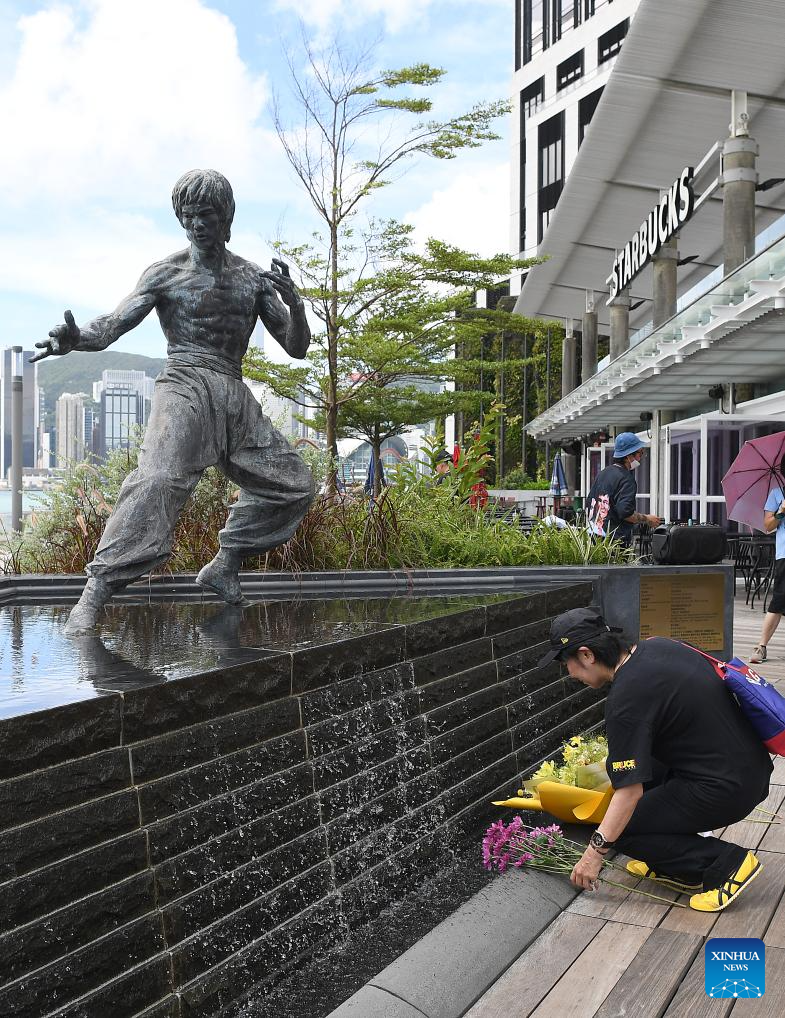










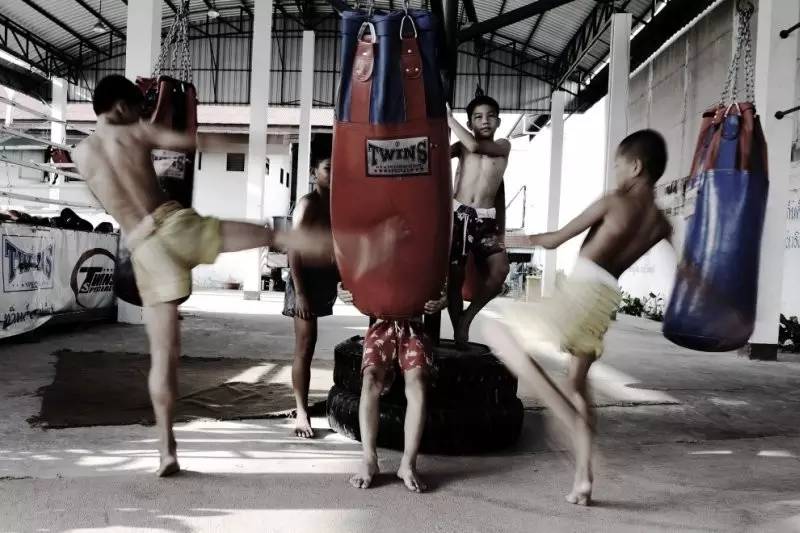

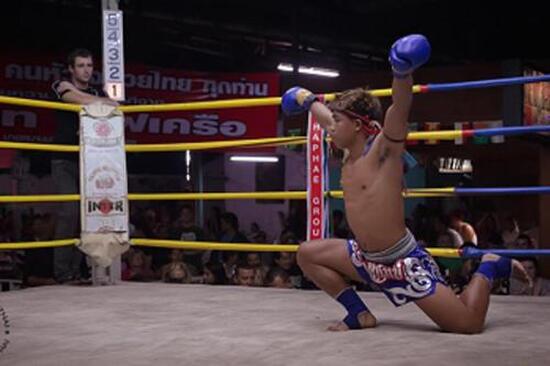
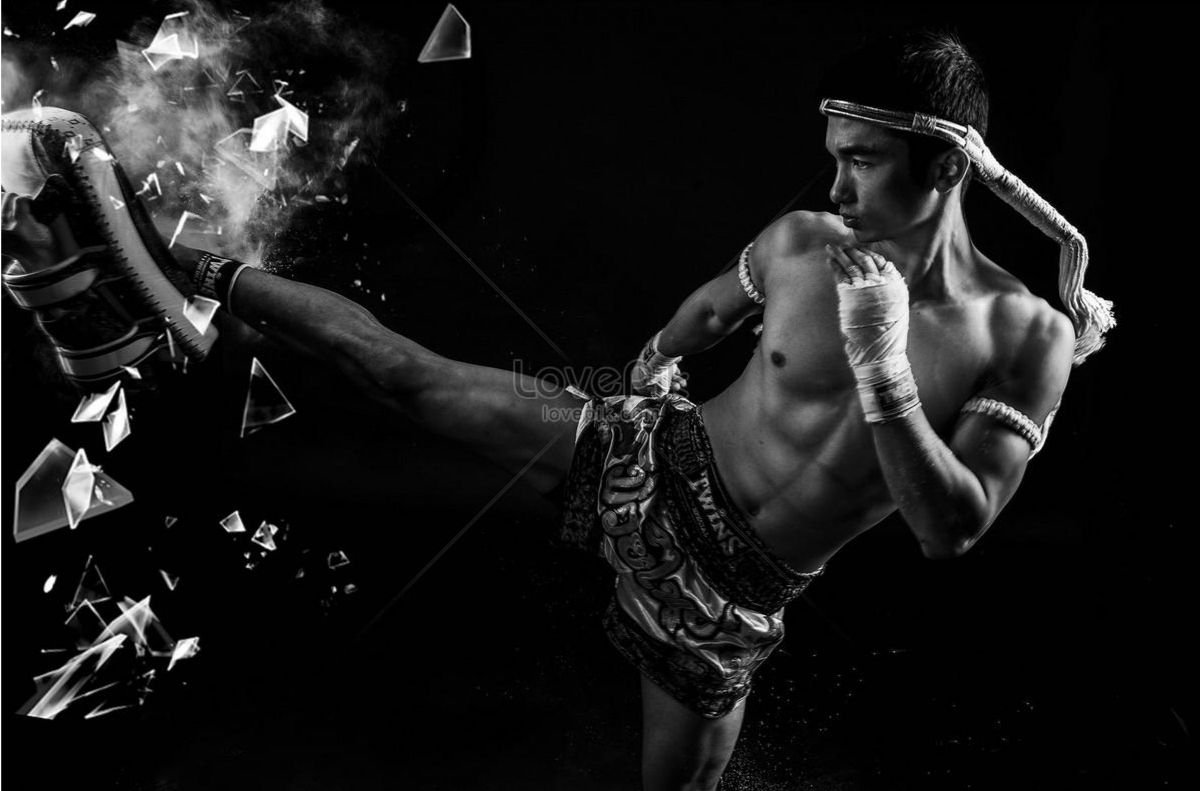
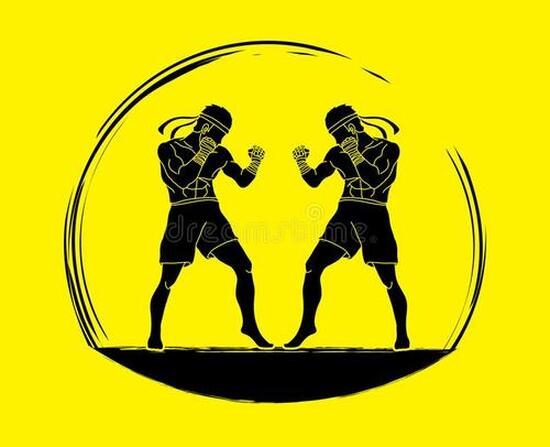
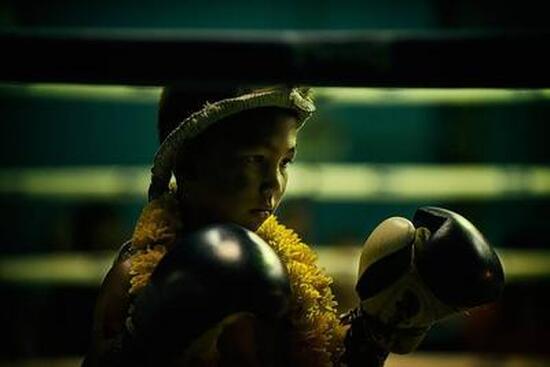

 RSS Feed
RSS Feed